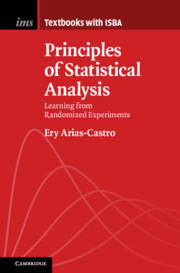Book contents
- Frontmatter
- Dedication
- Frontmatter
- Contents
- Preface
- Acknowledgements
- Part I Elements of Probability Theory
- 1 Axioms of Probability Theory
- 2 Discrete Probability Spaces
- 3 Distributions on the Real Line
- 4 Discrete Distributions
- 5 Continuous Distributions
- 6 Multivariate Distributions
- 7 Expectation and Concentration
- 8 Convergence of Random Variables
- 9 Stochastic Processes
- Part II Practical Considerations
- Part III Elements of Statistical Inference
- References
- Index
5 - Continuous Distributions
from Part I - Elements of Probability Theory
Published online by Cambridge University Press: 22 July 2022
- Frontmatter
- Dedication
- Frontmatter
- Contents
- Preface
- Acknowledgements
- Part I Elements of Probability Theory
- 1 Axioms of Probability Theory
- 2 Discrete Probability Spaces
- 3 Distributions on the Real Line
- 4 Discrete Distributions
- 5 Continuous Distributions
- 6 Multivariate Distributions
- 7 Expectation and Concentration
- 8 Convergence of Random Variables
- 9 Stochastic Processes
- Part II Practical Considerations
- Part III Elements of Statistical Inference
- References
- Index
Summary
In some areas of mathematics, physics, and elsewhere, continuous objects and structures are often motivated, or even defined, as limits of discrete objects. For example, in mathematics, the real numbers are defined as the limit of sequences of rational numbers, and in physics, the laws of thermodynamics arise as the number of particles in a system tends to infinity (the so-called thermodynamic or macroscopic limit). Taking certain discrete distributions (discussed in the previous chapter) to their continuous limits, which is done by letting their support size increase to infinity in a controlled manner, gives rise to continuous distributions on the real line. We introduce and discuss such distributions in this chapter, including the normal (aka Gaussian) family of distributions, and in the process cover probability densities.
- Type
- Chapter
- Information
- Principles of Statistical AnalysisLearning from Randomized Experiments, pp. 54 - 67Publisher: Cambridge University PressPrint publication year: 2022

